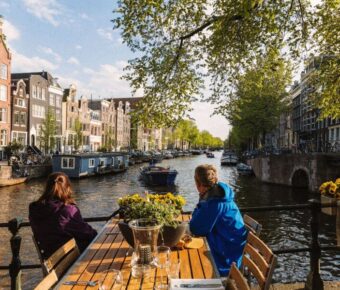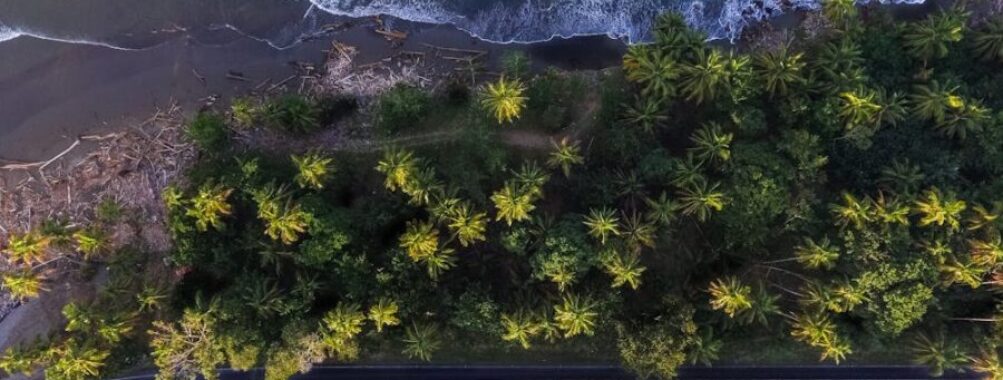
First Time Backpacking in Central America Tips: 10 Expert Secrets for a Safe and Unforgettable Journey
Backpacking through Central America for the first time honestly feels like tumbling into a whole new universe—think chaotic markets, beaches you’ll never want to leave, and border crossings that sometimes involve more chickens than people. Want to really enjoy Central America? Plan smart, pack light, and keep an open mind. Some days you’ll end up with sand in your hair, and on others, you’ll crash into bed after a long bus ride—trust me, that’s where the best stories come from.
If you’re just starting out, maybe you’re a little nervous about safety, costs, or navigating those infamous chicken buses. I remember my first time: eating street tacos in Guatemala, waking up to volcanoes, and getting lost way more than I’d like to admit. But, honestly, those unexpected detours? They made the trip.
Table of Contents
- Key Takeaways
- Planning Your Central America Backpacking Trip
- Creating a Realistic Central America Itinerary
- Choosing Top Backpacker Destinations
- Best Time To Visit Central America
- Budgeting and Travel Costs
- Budget Travel Strategies
- How to Save on Accommodation Options
- Travel Insurance Essentials
- Packing Essentials for Central America
- What to Pack for Central America
- Clothing and Footwear Recommendations
- Packing List Tips and Tricks
- Safety Tips and Travel Health
- Staying Safe While Backpacking
- Recognizing Common Scams
- Health Precautions and Medical Prep
- Getting Around: Transport in Central America
- Using Public Transport and Chicken Buses
- Inter-Country Connections
- Iconic Backpacking Routes and Highlights
- Must-See Natural Wonders
- Unmissable Cities and Towns
- Ancient Mayan Ruins and History
- Top Outdoor Adventures
- Hiking Volcanoes and Trails
- Surfing and Water Sports
- Diving and Snorkeling Hotspots
- Best Places for Scuba Diving
- Snorkeling on the Caribbean Coast
- Experiencing Local Culture and Cuisine
- Cultural Experiences to Seek Out
- Must-Try Central American Foods
- Unforgettable Beaches and Island Escapes
- Beautiful Beaches Worth Visiting
- Island Hopping Tips
- Country Guides and Travel Highlights
- Mexico: Bacalar, Tulum & Playa del Carmen
- Guatemala: Antigua, Lake Atitlan, Semuc Champey
- Costa Rica: Monteverde & Puerto Viejo
- Panama: Panama City & Panama Canal
- Notable Small Towns and Hidden Gems
- El Salvador: El Tunco & Surf Culture
- Belize: Hopkins & San Ignacio
- Honduras: Bay Islands Adventure
- Wildlife Encounters and Natural Beauty
- Where to See Wildlife in Central America
- Exploring Rainforests and National Parks
- Frequently Asked Questions
- What are essential packing items for a long-term backpacking trip in Central America?
- How do I budget effectively for a multi-country backpacking journey across Central America?
- What are some safety precautions I should take when backpacking through Central American countries?
- Can you suggest an ideal two-week itinerary for a first-time backpacker in Central America?
- What are the best ways to navigate transportation while backpacking in Central America?
- What cultural sensitivities should I be aware of when meeting locals during your backpacking adventure?
- Book Your Dream Experience
- More Travel Guides
Key Takeaways
- Know what to pack and budget for each country.
- Stay aware but embrace local culture and experiences.
- Use local travel guides to find hidden gems.
Planning Your Central America Backpacking Trip
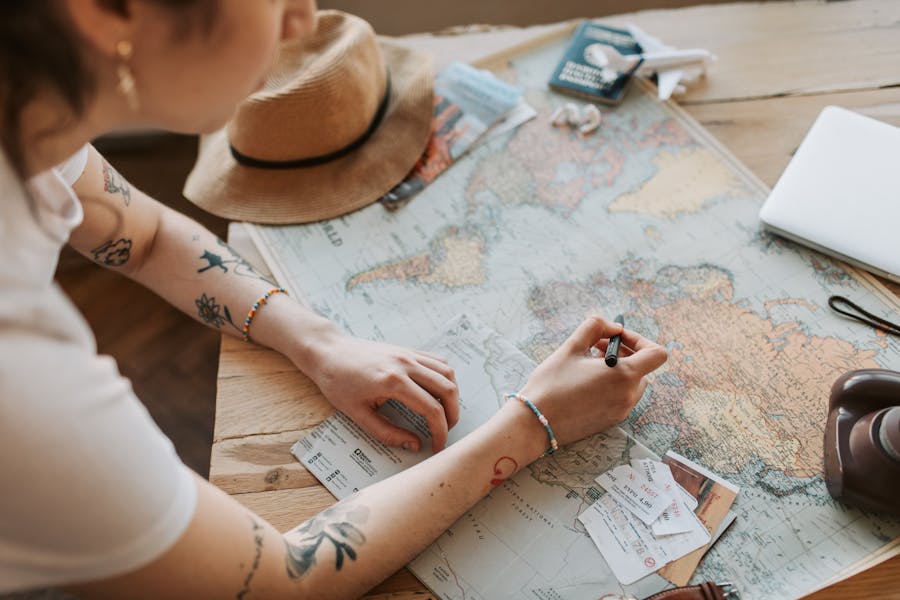
Some of the most memorable adventures in Central America start with a little planning. Mapping out your route and picking the right season can make your trip smoother and way less stressful.
Creating a Realistic Central America Itinerary
You’ll want to see it all, right? But really, slow down. Those buses look speedy on Google Maps, but a ride from Flores to Antigua can eat up most of your day.
It’s smarter to pick a handful of must-see places and leave space to breathe.
A lot of travelers follow the Gringo Trail—Belize, Guatemala, Honduras, Nicaragua, Costa Rica, Panama. Mixing big cities with sleepy surf towns keeps things fresh. Do your homework: visa rules and border crossings change, sometimes overnight, so double-check before you go.
Here’s what I’d suggest: plan for 3–5 days per country if you’re short on time. Always build in some flexibility. You might stumble into a surf town or get hooked on volcano hikes longer than you thought. For more travel freedom, booking your stay and bus tickets ahead through a solid travel booking platform can save you headaches.
Choosing Top Backpacker Destinations
So, where should you actually go? Central America’s loaded with backpacker hotspots, but a few places just have that extra spark you won’t find anywhere else.
For culture and history, Antigua in Guatemala is a no-brainer—cobblestone streets, volcano views, Spanish schools on every corner.
Love beaches or diving? Utila in Honduras or Bocas del Toro in Panama are legendary. La Fortuna in Costa Rica delivers hot springs and the Arenal Volcano right outside town.
Here’s a quick list of places you might want to check out:
- Backpacker favorites: Antigua, Granada, Leon, San Juan del Sur, Santa Teresa
- Nature & adventure: Arenal, Lake Atitlán, Monteverde
- Islands & beaches: Caye Caulker, Roatán, Bocas del Toro
- City stops: Panama City, San José
Mix it up—don’t just stick to the Gringo Trail. Some of the best memories come from towns you didn’t even plan to visit.
Best Time To Visit Central America
Weather can make or break your trip. The dry season (December to April) is usually the sweet spot—sunny days, easier roads, and fewer bugs. The rainy season (May to November) isn’t a deal-breaker, but expect the odd flooded road and a bit more hassle. Bring a rain jacket, seriously.
Each country’s a little different. Belize and the Caribbean coast sometimes get rain even during dry season. Costa Rica’s Pacific coast? January and February are your best bet. Watch out for big festivals like Semana Santa around Easter—hostels fill up, prices spike, and buses disappear fast. Book ahead if you’ll be there then.
If you can only travel during the off-season, don’t stress. There’s more rain, sure, but the landscapes go wild and the crowds thin out. Sometimes you’ll find better deals too. Stay flexible and keep an eye on the forecast.
Budgeting and Travel Costs

Traveling through Central America on a budget is totally doable—you just need to be a little clever. Planning, picking budget-friendly places to stay, and having travel insurance can go a long way.
Budget Travel Strategies
Budgeting isn’t about counting every penny; it’s about making your money stretch in fun ways. Set a daily budget—$30 to $50 usually works, depending on where you go. Nicaragua and Guatemala are super affordable, while Panama and Costa Rica can eat up cash faster.
Skip the tourist restaurants and eat at local spots. Street food is cheap, tasty, and, honestly, sometimes the best meal you’ll have.
For transport, long-distance buses and those colorful “chicken buses” are way cheaper than taxis or flying. Save taxis for late-night rides. For everything else, hop on a bus and see where it takes you. Pack light and use luggage storage near stations if you’re on a layover.
How to Save on Accommodation Options
Accommodation can eat up your budget fast, but there are so many options beyond hotels. Hostels are everywhere and not just for twenty-somethings—many have private rooms, Wi-Fi, and kitchens.
Guesthouses and local inns offer more culture and usually cost less than chain hotels. In some towns, you’ll find “casa particulares” or family homes renting out rooms. Sometimes, last-minute deals on affordable accommodation snag you a sweet room for half price.
If you’re staying a while, try negotiating a weekly rate. I’ve saved a lot just by asking politely—most places will shave a few bucks off per night for longer stays.
Travel Insurance Essentials
Travel insurance isn’t just for the overly cautious—it’s saved me (and plenty of friends) from disaster. Medical emergencies, lost gear, or flight delays can cost way more than a policy ever will.
Pick a plan that covers health, accidents, and theft. Some cheap plans barely cover anything, so check the details. Make sure you’ve got good medical coverage and baggage insurance. I’ve seen someone lose a phone on a bus in Honduras, and the insurance payout made all the difference.
Reliable travel insurance can even help with cancellations or stolen stuff. I wouldn’t travel without it, especially with all those border hops.
Read the fine print—some “bargain” plans have so many exclusions, they’re pretty much useless. Spend a little extra for peace of mind.
Packing Essentials for Central America
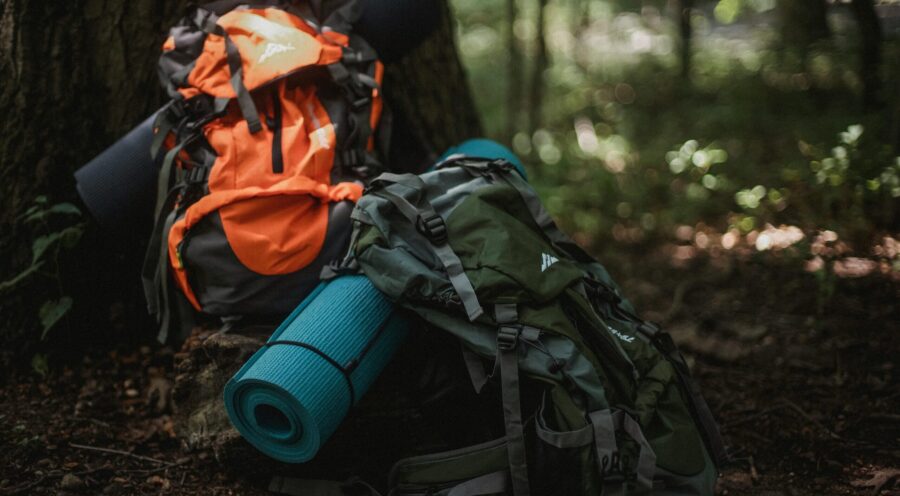
Packing for Central America is a bit of an art. Weather changes fast, streets are busy, and you’ll probably end up on a volcano one day and a beach the next. The right packing list makes life way easier.
What to Pack for Central America
Start with a lightweight, durable backpack. Trust me, you don’t want to drag a big suitcase through a muddy bus station. Bring a small daypack—20L is perfect for ruins or short hikes.
Essentials you’ll want:
- Passport (plus copies)
- Money belt or bum bag
- Water bottle and a basic first-aid kit
- Travel-size toiletries
- Quick-dry towel
- Portable charger
- Padlock for hostel lockers
Don’t forget sunscreen and bug spray—you’ll need them. Sunglasses are a must for those endless sunny days. Packing cubes help keep things organized, and if you’re starting from scratch, look into travel gear that actually lasts.
Clothing and Footwear Recommendations
Pack clothes you can mix and match. Stick to quick-dry fabrics—jeans and heavy cotton are a pain when it’s humid or you need to wash things in a sink.
Bring a few pairs of comfy shorts, some T-shirts, and a button-down for nights out. You’ll want a light rain jacket, because showers come out of nowhere. Don’t forget a warm layer for the highlands—trust me, it gets chilly up there.
For shoes, I always go with trail or hiking shoes—they handle muddy trails and city sidewalks. Flip-flops are perfect for the beach and hostel showers. Leave the fancy shoes at home. Pack enough underwear for a week and just do laundry as you go.
Packing List Tips and Tricks
You really don’t need as much as you think. Laundry is cheap and everywhere, so pack for a week and wash as needed. Rolling your clothes saves space and keeps wrinkles away—try it. Packing cubes are a game changer for staying organized.
Ziplock bags are lifesavers for wet clothes or keeping electronics dry in surprise storms. A dry bag or even a trash bag protects your gear on boat rides or in a downpour. Don’t skip a hat for sun protection and a decent pair of sunglasses.
Break in your shoes before you leave—your feet will thank you. If you need more essentials, there’s loads of travel gear out there that won’t break the bank. Test your full bag at home and ditch anything that feels like dead weight.
Safety Tips and Travel Health
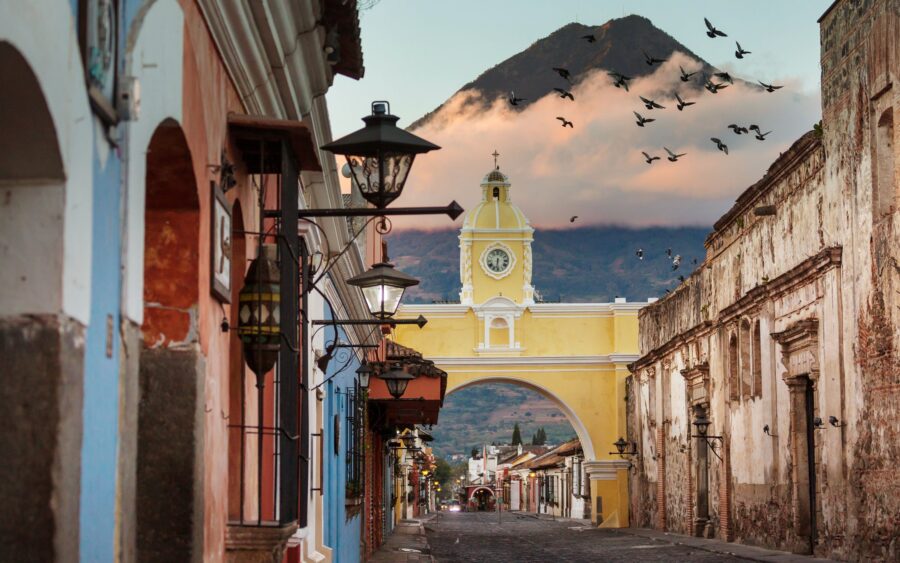
Central America is gorgeous, but you need to keep your eyes open. Theft, scams, food safety, and tropical bugs can ruin your trip if you don’t take some basic precautions.
Staying Safe While Backpacking
Hide your valuables and don’t show off expensive cameras or flashy backpacks. I’ve learned the hard way that blending in matters. Use a cheap wallet for daily cash and stash the rest in a money belt or locked up at your hostel.
Only use registered taxis or rideshare apps, especially at night. Wandering alone after dark in a new town? Not the best idea. Locals usually know which areas to avoid—ask around, and you’ll get honest advice.
Stick with other travelers for hikes or nights out in unfamiliar cities. Trust your gut. If something feels sketchy, it probably is. Pay a bit more for a safe ride instead of risking a walk home.
Here’s a quick safety checklist:
| Item | Reason |
|---|---|
| Copy of ID | For emergencies |
| Hidden money belt | Keep cash / cards safe |
| Small flashlight | Power cuts happen |
Recognizing Common Scams
Scams pop up wherever travelers go, and Central America’s no different. Someone might offer you a bargain tour, but if it sounds too good, it usually is. I nearly got duped by a fake shuttle in Guatemala—my hostel owner saved me with a heads up.
Watch out for unsolicited offers, especially at bus stations or crowded markets. Be wary of people “helping” with your luggage—they might demand a tip or try to swipe your bag. Book tours and transport through trusted companies, your hostel, or official sites.
Pickpockets love crowded buses. Use a backpack with zippers against your back or chest. If someone gets too friendly or tries distracting you, keep a tight grip on your stuff. When in doubt, just walk away.
Some common scams to watch for:
- Overpriced taxis with no meter
- Fake police demanding “fines”
- ATM “helpers” who skim your card
- Broken meter excuses
Health Precautions and Medical Prep
Don’t trust the tap water in most of Central America. Maybe you’ll get away with it in Costa Rica or the big cities of Panama, but it’s not worth the risk. I always stick to bottled or filtered water, even just for brushing my teeth. A reusable filter bottle is a game-changer—less plastic, more money for street food.
Before you go, double-check your routine vaccines. Hepatitis A and typhoid are worth considering too. Mosquitoes can be relentless, and illnesses like dengue and Zika show up more often than you’d hope. I’ll never forget traveling through Honduras with a friend who skipped the bug spray—she spent half the trip in bed, miserable.
Toss a small first aid kit in your bag if you’re heading anywhere remote. I bring band-aids, some antibiotics for stomach bugs, anti-diarrheal meds, painkillers, and whatever prescriptions I need. Pharmacies pop up everywhere in bigger towns, but out in the countryside, you’re on your own if you get sick.
Here’s what I never leave behind in my travel health kit:
- Filter water bottle or tablets
- Pain relievers and stomach meds
- Sunscreen and bug spray
- Prescription meds with a copy of the script
Trust me, it’s better to have it and not need it than the other way around. You do not want to hunt for stomach meds in a tiny mountain village.
Getting Around: Transport in Central America

Backpacking through Central America? How you move around will totally shape your trip. Cheap buses, wild chicken buses, and those unpredictable border crossings—they’re all part of the story.
Using Public Transport and Chicken Buses
Most backpackers, myself included, rely on public buses to get around. They’re cheap, go nearly everywhere, and honestly, it’s the best way to get a front-row seat to daily life. You’ll spot old U.S. school buses reborn as “chicken buses”—painted in wild colors, packed with locals, and bursting with bags of produce.
These rides can get loud and bumpy, but the fares are laughably cheap. Keep your bag close; things get crowded fast and stops are quick. Don’t expect posted schedules or much English, especially outside the main cities.
If you’re lost or unsure where to hop off, just ask the driver or a fellow passenger. People help out, even if your Spanish is a mess. I kind of love the chaos, once you settle into it. Try to catch early morning buses—afternoons are usually standing room only, and the heat is no joke.
If you get tired of bouncing around on buses, check out cheap flights to top destinations for a break.
Inter-Country Connections
Crossing borders here is its own adventure. Sometimes you’ll take a shuttle, sometimes a bus, sometimes even a boat. Shuttles cost more, but they smooth out the process if you’re willing to pay for convenience.
Usually, local buses drop you at the border, you walk through customs, and grab another bus on the other side. It’s straightforward but can take patience. Always keep some small bills for border fees. The rules and prices seem to change all the time, so double-check before you go.
Bus drivers and hostel staff are goldmines for last-minute updates—seriously, they know the latest. I can’t count how many times someone tipped me off about a surprise checkpoint or a new fee at the Guatemalan or Nicaraguan border.
Planning ahead helps, but sometimes you just have to roll with it. If juggling buses and borders sounds exhausting, peek at flight deals for shortcuts between big cities. Honestly though, those long border waits and sweaty lines? That’s where the best stories happen, if you ask me.
Iconic Backpacking Routes and Highlights
Central America’s a wild mix of untamed nature, vivid cities, and ancient ruins. Each country’s got its own flavor, and the classic backpacker circuit is legendary for a reason.
Must-See Natural Wonders
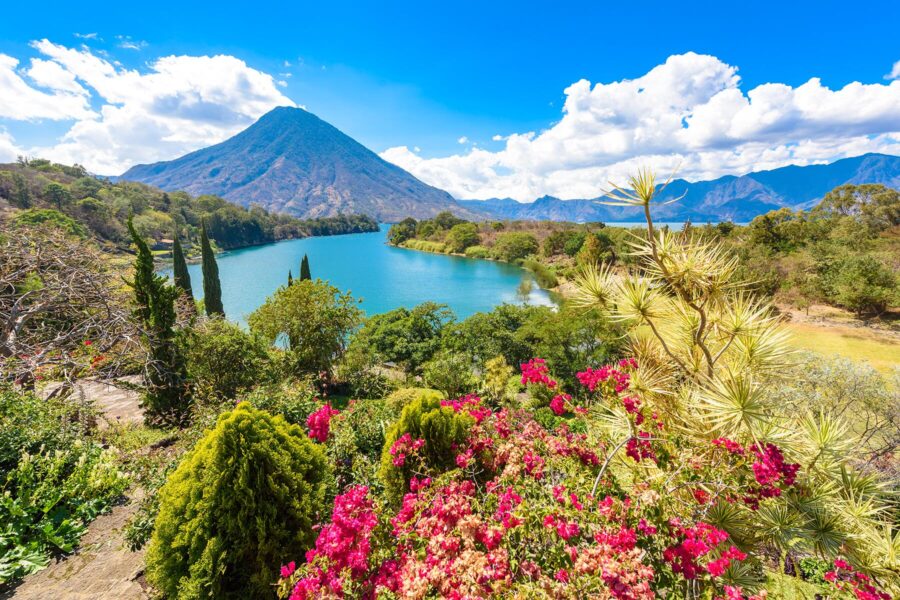
Picture waking up to Lake Atitlán in Guatemala—volcanoes looming, mist curling on the water. I still remember gritty coffee at dawn, watching fishermen paddle by. It’s quiet, almost otherworldly, until the markets explode with life.
Costa Rica pulls you in if you can’t sit still. Monteverde’s cloud forests are draped in mist, with monkeys chattering overhead. Head south for Manuel Antonio’s wild beaches, where sloths hang out above the sand.
Nicaragua’s Ometepe Island is a magnet for hikers, thanks to its twin volcanoes. If you want something off the usual trail, go for reef diving in Honduras’ Bay Islands. My first time snorkeling there, I almost didn’t believe the colors were real.
If you’re itching to book a tour or just want a guide for these spots, there’s a huge list of day trips and activities out there.
Unmissable Cities and Towns
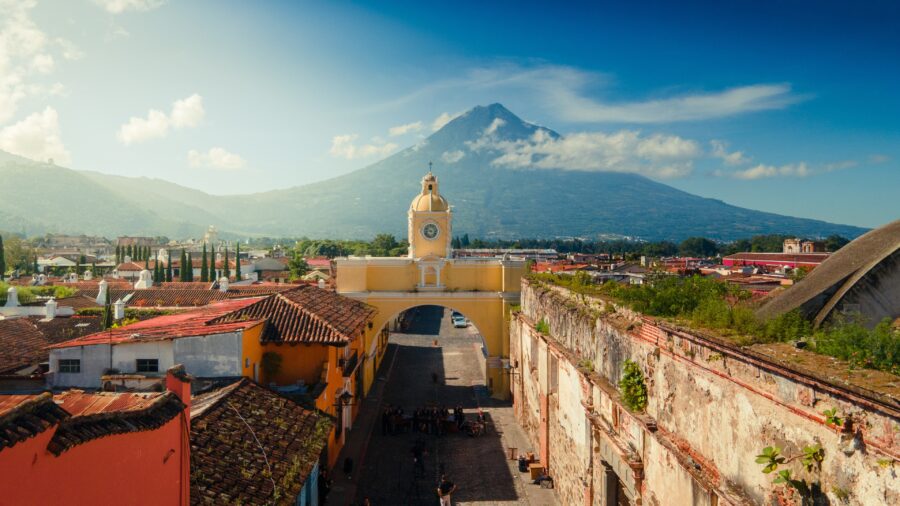
Antigua, Guatemala, honestly steals the show for colonial charm. Pastel buildings, cobblestone streets, volcanoes on the horizon—every corner is a photo op. Don’t rush it. Spend a few nights, let the city’s rhythm slow you down.
León in Nicaragua is all murals and revolution history, with local bands sometimes playing in the square. Granada nearby is a different vibe—markets, easygoing cafés, and those old Spanish roofs that seem to soak up the heat.
San José and Panama City are busy, but they work as base camps. Flores in northern Guatemala is perfect for Tikal trips and lazy lakeside evenings after climbing temples.
Ancient Mayan Ruins and History
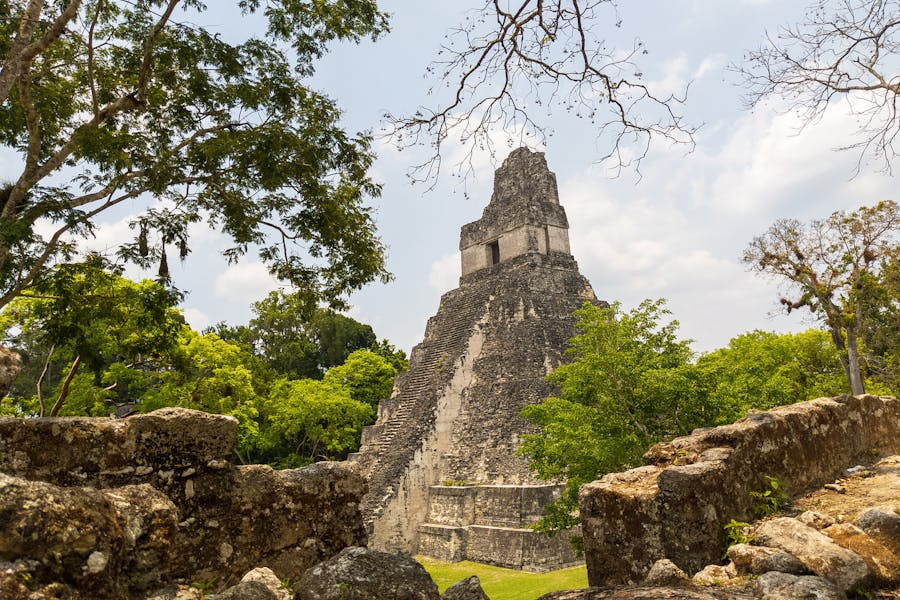
You just can’t skip the Mayan ruins here. Tikal in Guatemala is non-negotiable—climb up at sunrise, listen to howler monkeys, and take in the view from Temple IV. It’s one of those moments that sticks with you.
Copán in Honduras is quieter but just as haunting. The carvings look untouched, and the town nearby is so close you can wander to the ruins at dawn or dusk. Guards will whistle if you get too close, so don’t push your luck.
If you want something easier, check out the pyramids in southern Mexico or Belize’s jungle temples. But if you’re tight on time, Tikal and Copán are the big hitters for stepping into the ancient Maya world.
Top Outdoor Adventures
Central America is a playground for outdoor junkies. Volcano hikes, wild trails, and surf breaks—no two days are the same.
Hiking Volcanoes and Trails
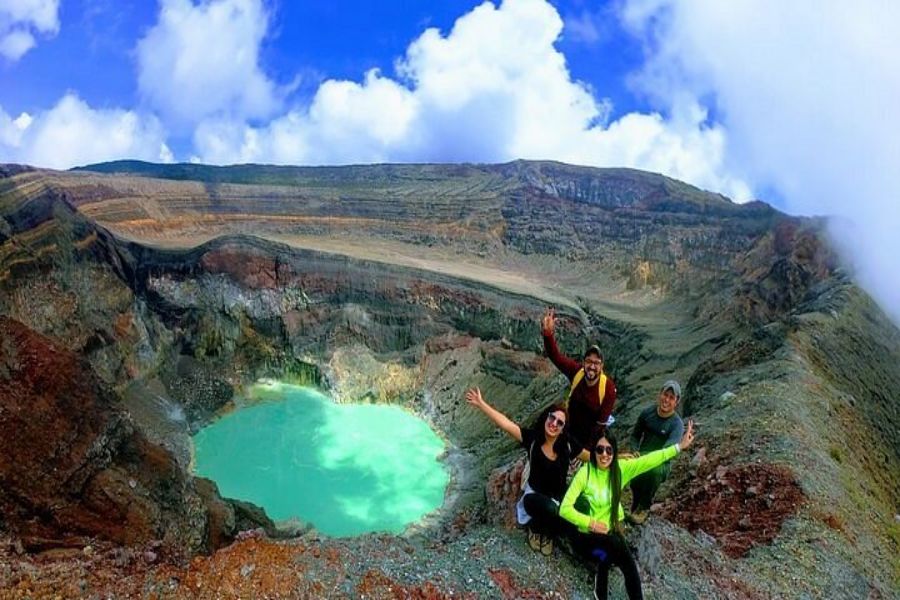
If climbing is your thing, you’re in the right place. Hiking here means steaming volcanoes, dense cloud forests, and jungle trails that feel straight out of a movie.
Santa Ana Volcano in El Salvador is a personal favorite. The hike takes about four hours, and while it’s challenging, you don’t need to be a pro. Good boots, a rain jacket, and some patience for the crowds near the top will get you there. The view of the neon blue crater lake at the top? Unreal.
Monteverde in Costa Rica is perfect if you like foggy forests and ziplining with the birds. Trails wind through thick green, and monkeys are never far off. Got extra time? Lake Atitlán’s lakeside paths offer mellow hikes or sunrise climbs for early risers.
If you want a guide or just need ideas, there are plenty of tours and hikes you can book.
Surfing and Water Sports
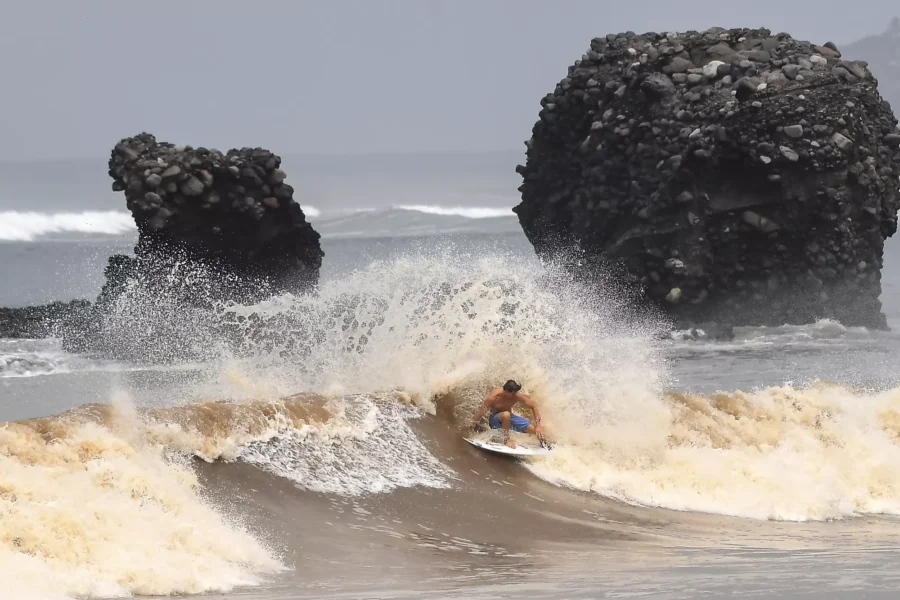
Maybe you’d rather be in the water than climbing up stuff. The Pacific coast, from El Salvador to Costa Rica, is a surfer’s paradise.
El Tunco beach in El Salvador is famous for good reason. Mellow waves for beginners in the morning, bigger sets later for anyone chasing a challenge. Lessons are everywhere and not too expensive. People are laid-back, waves are steady, and after a few tries, you’ll be standing up—if only for a second!
Down in Nicaragua, San Juan del Sur has cheap boards and a super relaxed vibe. If surfing’s not your thing, try kayaking, paddle boarding, or boat trips on Lake Atitlán. Early mornings there—honestly, it’s like gliding across glass.
Quick tips:
- Always use reef-safe sunscreen—the sun is brutal.
- If you wear contacts, invest in decent goggles.
- Keep an eye on your gear; things left on the sand sometimes walk away.
It’s a fantastic region to try new water sports and meet other travelers chasing waves.
Diving and Snorkeling Hotspots
Central America’s underwater world is a wild ride—think shipwrecks, vibrant reefs, and enough sea life to make your head spin. The Caribbean side and chill islands are especially worth a detour.
Best Places for Scuba Diving
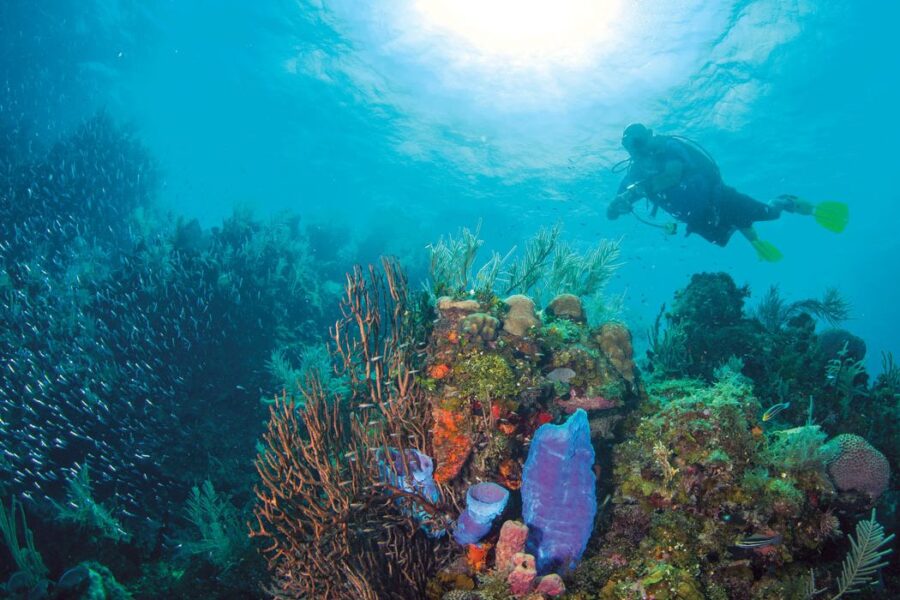
If you’re even a little curious about scuba, head straight to the Bay Islands in Honduras. Utila and Roatan are legendary for a reason. Utila is backpacker central, with dive shops everywhere and cheap certification courses (I got my PADI there—those sunsets stick with you). Roatan’s pricier, but the coral and sea turtles are worth it.
Diving isn’t just about fish and coral—whale sharks sometimes cruise by Utila between March and May. I’ve met people who spotted them on day two. Night dives on Roatan are surreal—turn off your torch and watch the plankton light up all around you.
Snorkeling on the Caribbean Coast

Not into tanks and gear? Snorkeling here is just as wild. Bocas del Toro in Panama is a top pick—calm water, protected reefs, and you’ll see something cool even if you just flop in off the dock.
Caye Caulker in Belize is another favorite. The whole island moves slow, and boat trips to the Belize Barrier Reef are easy to book. Stingrays, manatees if you’re lucky, and colors straight out of a cartoon. Bring a waterproof camera if you can—no sharks, no stress, just don’t forget the sunscreen.
Experiencing Local Culture and Cuisine
You can’t really say you’ve been to Central America if you haven’t tasted the food or chatted with locals. The smells, the flavors, the random conversations—they stick with you way longer than any ruins.
Cultural Experiences to Seek Out
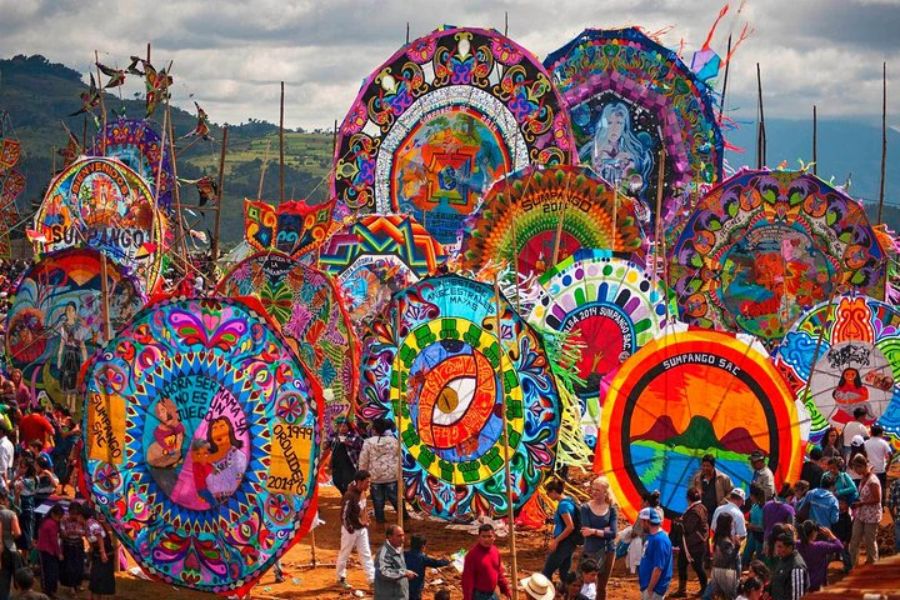
Wandering through markets is one thing, but actually talking to vendors—or trying to haggle in Spanish—makes it memorable. Locals appreciate the effort, even if your accent is all over the place. I once tried to buy mangoes and ended up asking for “cat feet”—don’t always trust Google Translate.
Try to plan your visit around a local festival or community event. In Guatemala, towns go wild with processions and fireworks for just about anything. Nicaragua throws street parades with marimba bands and dancing that goes all night. If you get invited, join in—even if your dance moves are questionable.
Look for workshops in traditional crafts—maybe weaving in the highlands or pottery in Honduras. These aren’t just tourist traps; families have passed these skills down for generations. Spend time in someone’s kitchen or with locals, and you’ll learn more about the culture than any museum could ever show you.
Must-Try Central American Foods

Central America’s flavors are all over the map. I always say, if you want to get to know a place, start with the street food. You can’t skip pupusas in Guatemala or El Salvador—corn cakes stuffed with beans, cheese, and a spicy cabbage slaw.
Street vendors usually sell them for about a dollar, and I promise, after one bite, you’ll get why locals line up. There’s something about the salty, gooey filling and that little crunch on the outside—just addictive.
Tacos? Sure, you’ll find them everywhere, but don’t assume they’re all the same. Honduras does baleadas—soft flour tortillas loaded with mashed beans, crema, eggs, or chicken. It’s simple comfort food that hits the spot after a long day.
If you’re near the coast, hunt down some ceviche. Fresh fish or shrimp, lime juice, cilantro, onions, and usually a pepper that’ll make you sweat. I once had a bowl in Belize that nearly set my mouth on fire, but honestly, I’d do it again.
Don’t just stick to the main dishes. Try roasted plantain chips, spicy corn, or those icy fruit drinks in little plastic bags. They’re everywhere, and usually, a local will nudge you toward their favorite cart if you ask. The best food moments often happen perched on a plastic stool by the roadside, chatting with someone you’ve never met.
Unforgettable Beaches and Island Escapes
Central America’s coastlines are wild, unpredictable, and packed with surprises. Islands here have personalities—some are mellow, some are buzzing, and a few feel like they’re waiting just for you.
Beautiful Beaches Worth Visiting
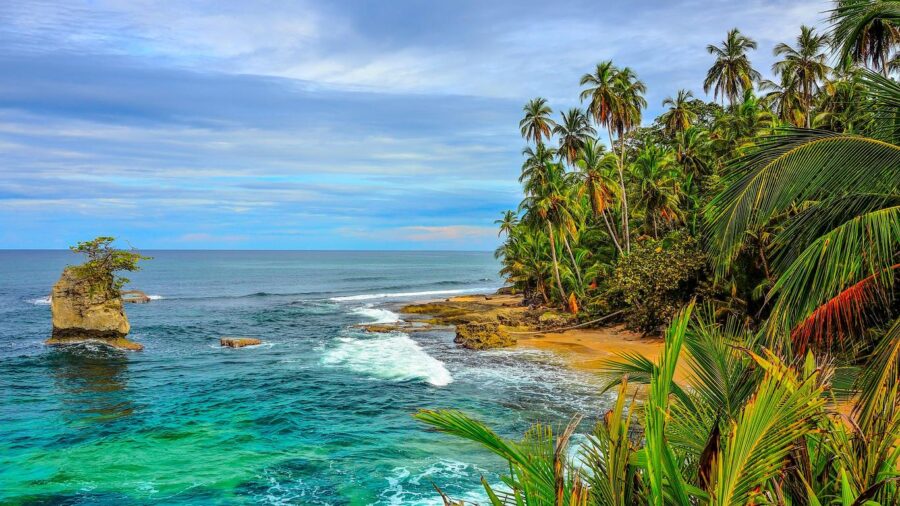
If you want a laid-back scene, Puerto Viejo in Costa Rica is where you’ll probably end up staying longer than planned. Black sand beaches, reggae bars, and the occasional sloth overhead—it’s got a rhythm all its own.
I’ve spent late nights around bonfires with backpackers from everywhere, and honestly, those are the stories that stick with you. The place just pulls you in.
Bocas del Toro in Panama is a top pick if you want a mix of chill and thrill. The main island has hostels and cafés, but you can hop in a water taxi and find a beach all to yourself. Red Frog Beach is a favorite—soft sand, barely anyone around, and just enough wildness to keep it interesting.
Ometepe Island in Nicaragua is smack in the middle of a lake, with beaches that show off volcano views. It’s not for partying—more for soaking up nature. Rent a scooter, bounce between beaches, and don’t be surprised if a cow strolls by as the sun sets.
If you’re after that postcard-blue water, Caye Caulker in Belize might be your spot. Snorkel with rays and nurse sharks, and just go slow—the island’s motto is a way of life here.
Island Hopping Tips
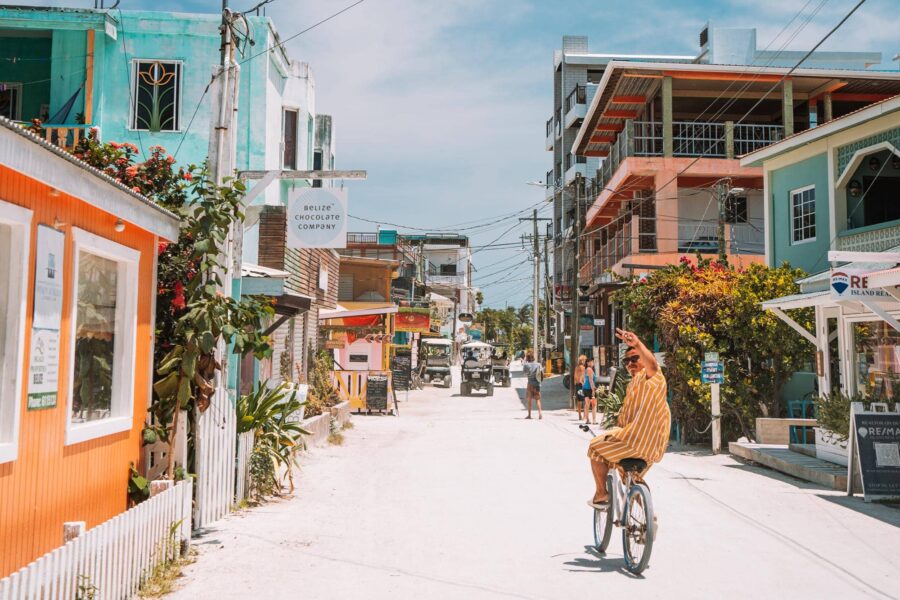
Island hopping sounds dreamy, but there’s always a twist. Local boats often run on their own time, so I always double-check schedules the night before—especially in places like Bocas or Caye Caulker. ATMs can be unreliable, so bring more cash than you think you’ll need.
Travel light. Trust me, dragging a heavy backpack down a wobbly dock is a rookie mistake. Quick-dry clothes, flip flops, and a dry bag for your phone and passport are essentials. On Ometepe, renting a scooter or bike is fun, but the roads can get gnarly after rain—take your time and watch for potholes.
Expect the unexpected. One day you’ll find yourself alone on a quiet beach with nothing but a coconut stand. Another day, you’ll hit a crowd and street food galore. Both are part of the fun.
If you’re into snorkeling or kayaking, skip the big tours and ask locals—they usually know the hidden spots. Oh, and bring a power bank. I’ve lost count of how many sunsets I nearly missed snapping because my phone died halfway to the next island.
Country Guides and Travel Highlights
Every country in Central America has its own energy and quirks. The big sights are great, but I always look for those little surprises and shortcuts that make a trip memorable.
Mexico: Bacalar, Tulum & Playa del Carmen
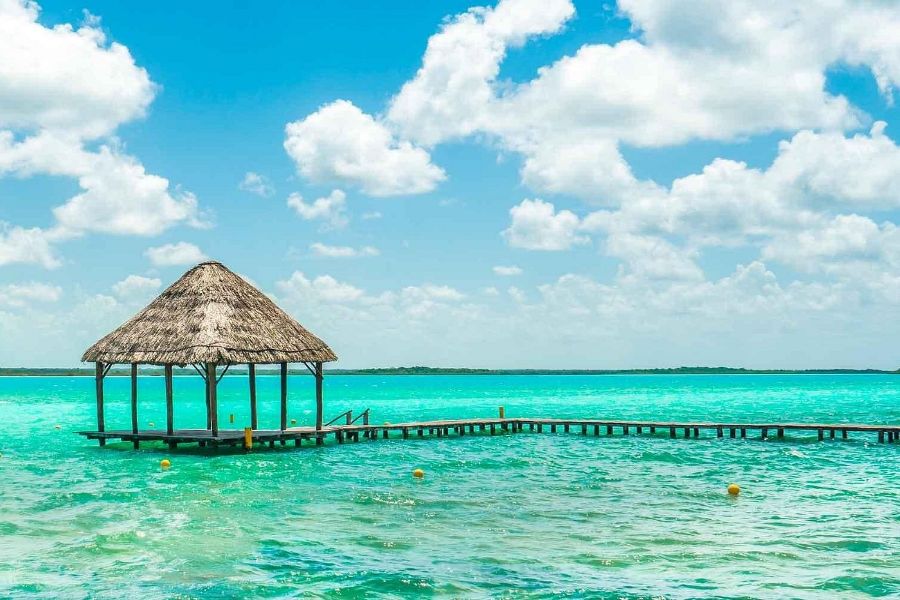
Mexico’s Caribbean coast? It’s got that turquoise water and white sand you see in travel ads, but Bacalar is my favorite if you want less hype. The “Lagoon of Seven Colors” is unreal for swimming or kayaking, and I’m not exaggerating when I say the sunrise will stick with you.
Tulum’s gotten trendy, sure, but you still get Mayan ruins perched above the sea, boutique hotels, and fish tacos that’ll ruin you for all others. The cenotes are perfect for a swim, and if you’re up for it, ride a bike into the jungle—there’s always something unexpected down those dirt paths.
Playa del Carmen is more developed and lively—think nightlife, cafés, and an easy jump-off point to Cozumel or other islands. If you’re into parties and water sports, you’ll fit right in. Grab an elote from a street cart; it’s messy, but totally worth it.
Guatemala: Antigua, Lake Atitlan, Semuc Champey
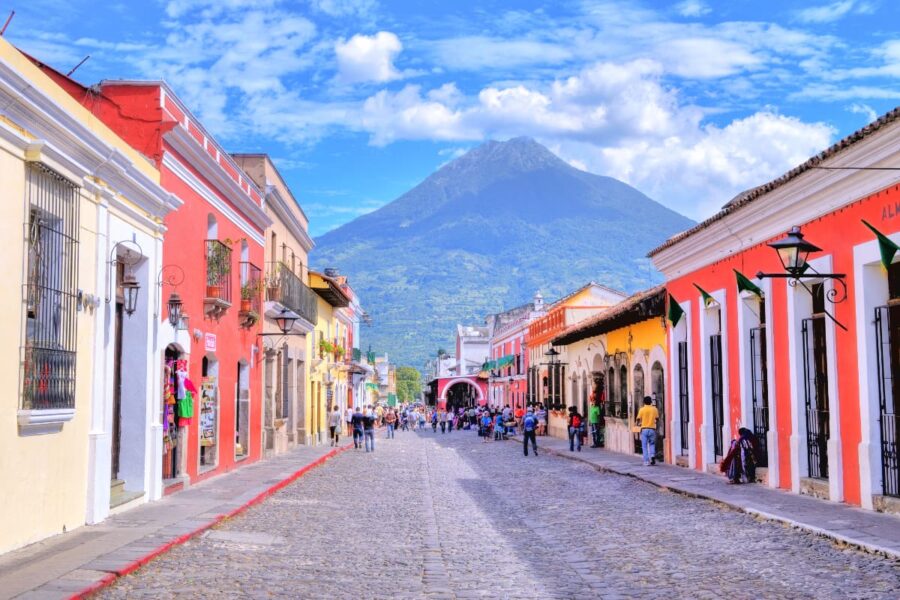
Guatemala pops with color and energy. Antigua’s pastel buildings and volcano backdrops just beg for photos. Cafés are cozy, markets are a little chaotic, and the Spanish colonial architecture is a photographer’s dream.
I always tell people to check out Lake Atitlan next. Volcanoes ring the lake, and every little village has its own vibe. San Pedro is backpacker-friendly and easy on the wallet, while San Marcos draws the yoga crowd. Take the boat between villages—it’s cheap, breezy, and you’ll meet all kinds of characters.
Semuc Champey is a trek, but if you love wild places, don’t skip it. Turquoise limestone pools hidden in the jungle, and the hike up is sweaty but the view is wild. Swim in the pools, explore the caves nearby (bring a flashlight!), and just enjoy being off the grid for a bit.
Costa Rica: Monteverde & Puerto Viejo
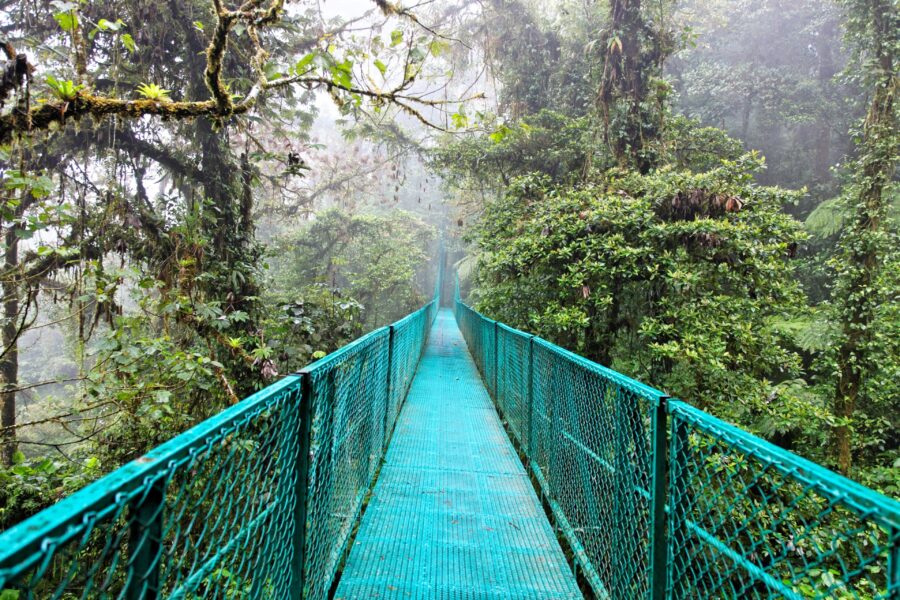
Costa Rica is a playground for nature lovers. Monteverde’s cloud forest feels like another world—misty, green, and humming with life. Walk the hanging bridges, zipline if you’re brave, and keep your eyes peeled for sloths and toucans.
It gets foggy a lot, so pack a rain jacket and just embrace the frizz. Night tours are cool if you want to see glowing bugs or, occasionally, a tarantula. The jungle here is alive in ways you don’t expect.
Puerto Viejo, on the Caribbean coast, is all about reggae, wild beaches, and a relaxed pace. Surfing here is legendary, but even if you just want to chill, rent a bike and ride south to Manzanillo. The local chocolate tour is a must—the cacao comes right from the backyard.
Panama: Panama City & Panama Canal
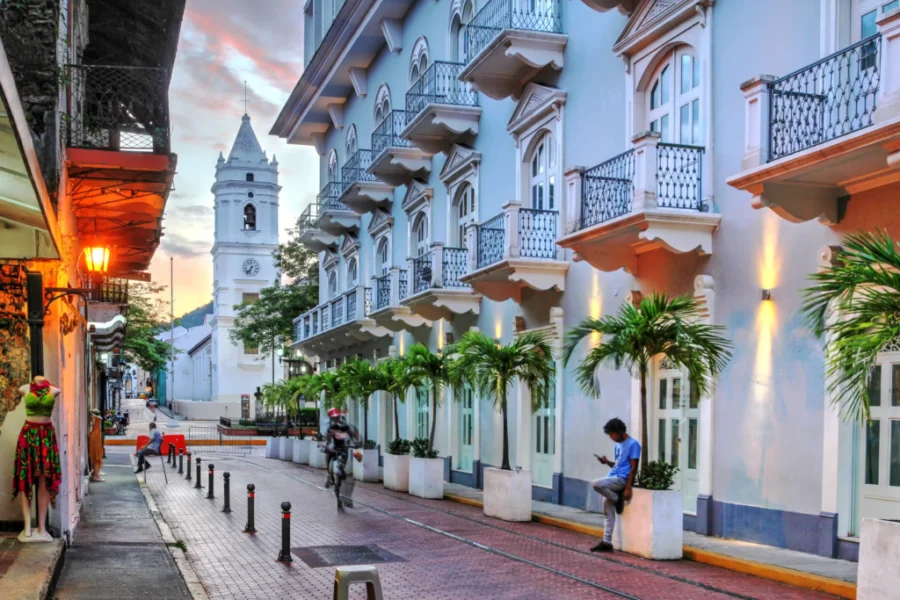
Panama City is a wild mash-up—modern skyscrapers on one side, old colonial streets in Casco Viejo on the other. Casco Viejo is where backpackers hang out, with hip hostels, street art, and rooftop bars for sunset views. I like to grab a coffee and just wander—there’s something about the light here at dusk.
You’ve got to see the Panama Canal at least once. I thought it’d be boring, but watching those massive ships rise and drop at the Miraflores Locks is kind of hypnotic. The visitor center has cool exhibits if you’re into engineering or just want to escape the heat.
If you’ve got extra time, check out the nearby jungle or hit the fish market for fresh ceviche. The city’s big, but buses and the metro are cheap and safe, so getting around isn’t a hassle—even if your Spanish is a bit rusty.
Notable Small Towns and Hidden Gems
Some of Central America’s best stories happen far from the big-name spots. Small towns here are packed with local flavor, friendly faces, and adventures you won’t find in the cities.
El Salvador: El Tunco & Surf Culture
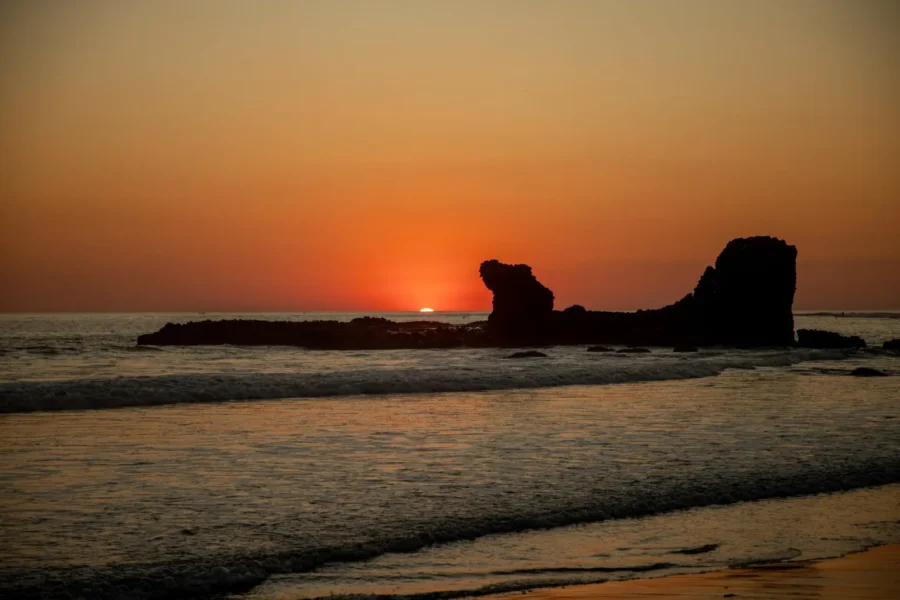
If you’ve ever wanted to try surfing (or just watch the pros), El Tunco is the place to do it. This tiny town on El Salvador’s Pacific coast is laid-back, colorful, and feels pretty safe for travelers. The black sand beach is dotted with smooth stones, and the waves are perfect for beginners and more seasoned surfers.
I still remember my first surfing lesson here—wiped out at least ten times, but the instructor barely laughed. Local tips? Grab a pupusa from a beachfront shack, and don’t miss Friday nights when the whole beach lights up with music and sunsets you’ll talk about for years.
Hostels line the main street, so you’ll meet loads of travelers—some who showed up for a weekend and never left. You can also hike to waterfalls or take a day trip to a volcano. Just take it slow—this isn’t a place for rushing.
Belize: Hopkins & San Ignacio
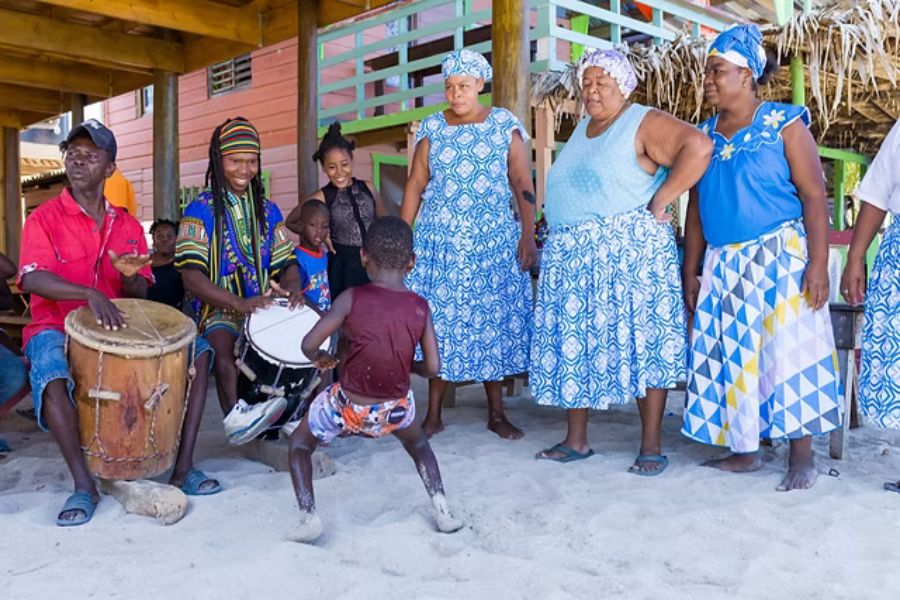
Hopkins is a little different from anywhere else in Belize. The Garifuna community here brings music and rhythm that drift out of bars every night. If you haven’t tried cassava bread or taken a drumming lesson, here’s your shot. The beaches are uncrowded, but the real magic is in the conversations and the food.
San Ignacio is inland and draws outdoor lovers. You can venture into Maya caves, float down a river, or just hang at the farmers’ market. One afternoon, I ended up tasting honey right from the comb with local beekeepers—way better than anything store-bought.
Don’t miss canoeing the Macal River, exploring ATM Cave (it’s spooky but unforgettable), and sampling local chocolate made in town. Both towns are friendly, easy to reach by bus, and have a way of slowing you down—whether you want to or not.
Honduras: Bay Islands Adventure
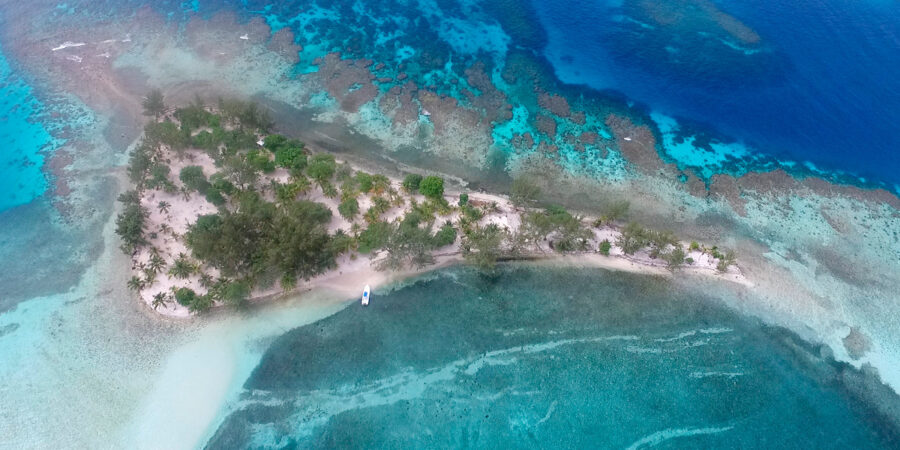
The Bay Islands—Utila and Roatán—are Caribbean gems that won’t break the bank. I’d never scuba dived before coming here, but the coral is wild, and you might spot turtles, rays, or even whale sharks if luck’s on your side.
Utila is backpacker central, with cheap dive courses, hammocks everywhere, and boat rides that sometimes leave you soaked. Roatán’s a bit fancier, with gorgeous beaches and a few bars if you want to splurge.
Here’s what makes the Bay Islands stand out:
| Activity | Island | What to Expect |
|---|---|---|
| Scuba Diving | Utila | Affordable courses, young crowd |
| Snorkeling | Roatán | Clear water, lots of fish |
| Chilling out | Both | Beach bars, hammocks, incredible views |
Even if diving isn’t your thing, you’ll love the relaxed island pace, fresh seafood, and those sunsets you can’t help but photograph. Bring bug spray and ditch your shoes—you’ll want to feel the sand every day.
Wildlife Encounters and Natural Beauty
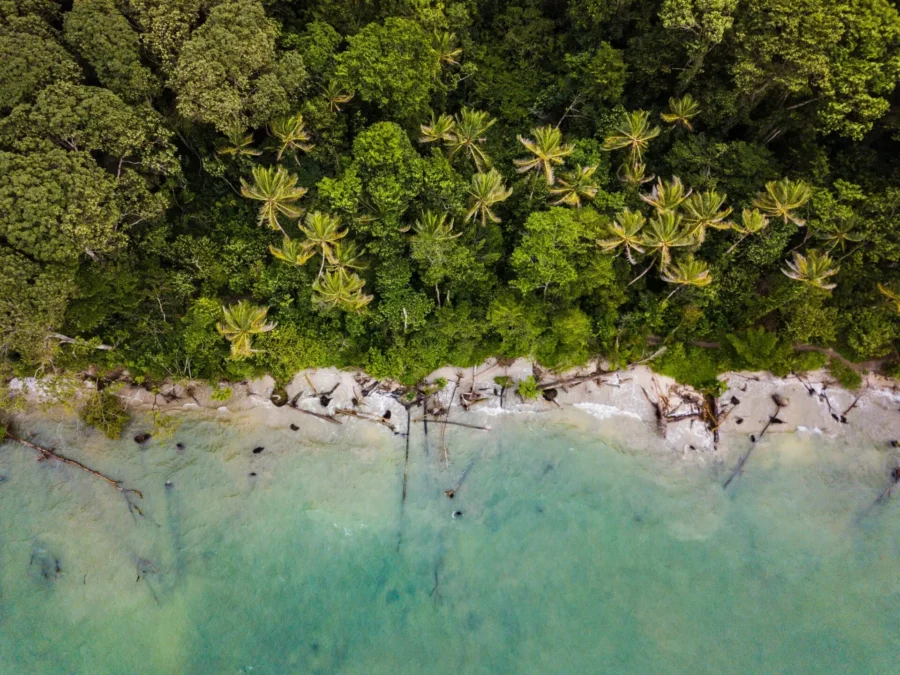
Central America bursts with jungles, wildlife, and rivers that twist through the landscape. If you’re into the outdoors, get ready for sloths dangling overhead, monkeys calling at sunrise, and nature moments that’ll stick with you long after you leave.
Where to See Wildlife in Central America
You’re almost guaranteed to run into something wild—sometimes when you least expect it. Costa Rica gets all the hype for toucans, sloths, and howler monkeys. I’ll never forget the time a sloth crawled across the road in Monteverde, halting traffic like a slow-motion parade.
In Panama’s Bocas del Toro, dolphins often glide by while you’re just sitting on the water taxi. The first time I saw that, I nearly dropped my bag.
If birdwatching’s your thing, Guatemala’s Rio Dulce is a hidden gem. The place teems with herons, tropical birds, and if you’re lucky, you might spot a manatee. I’ve turned around more than once to find an iguana sunning itself right next to me.
Seriously—always look up, down, and behind you. Wildlife pops up everywhere, even in towns, where you might see coatis or monkeys wandering by.
Here’s a quick list of animals you could stumble across:
- Sloths (Costa Rica, Panama)
- Howler monkeys (almost anywhere)
- Jaguars (rare, but check Belize or Guatemala’s parks)
- Dolphins (Bocas del Toro, Panama)
- Manatees (Rio Dulce, Guatemala)
Keep your distance—no one likes a close-up gone wrong. And you’ll want a camera with a decent zoom, trust me.
Exploring Rainforests and National Parks
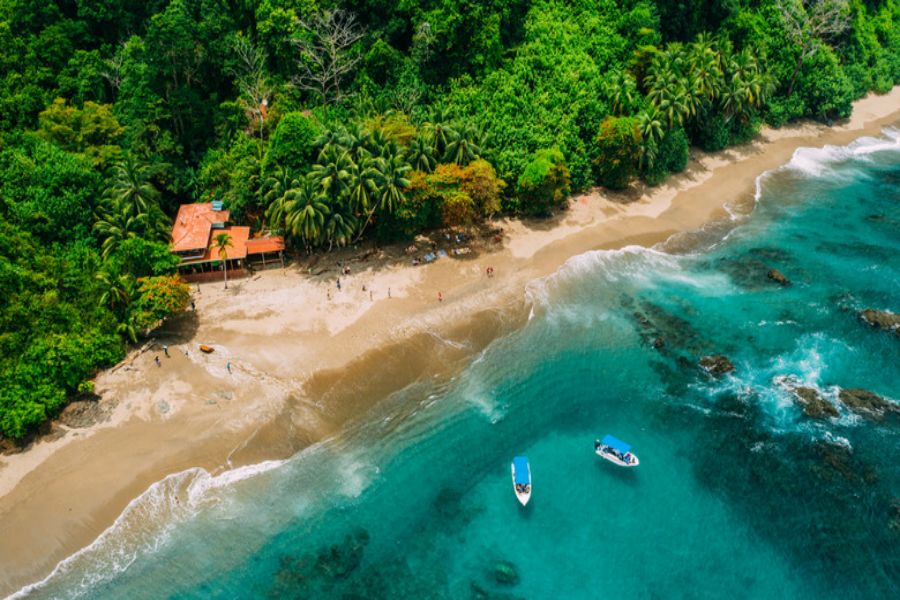
Central America’s rainforests and parks? They’re something else. Walking through the jungle in Costa Rica’s Corcovado or Guatemala’s Tikal, you start to feel like you’ve landed on another planet—humid, buzzing, and full of sounds you’ll never identify.
The trees stretch so high, and there’s always some distant monkey or bird making a racket.
Bring a lightweight rain jacket and closed-toe shoes; mud is just part of the deal. Early mornings work best, since that’s when animals come out.
I’ve wandered solo through Honduras’s Pico Bonito at sunrise, listening to howler monkeys echoing through the mist. That kind of moment sticks with you.
If you’re near Rio Dulce in Guatemala, hop on a boat and drift up the river. The jungle cliffs and tiny fishing villages create a scene you won’t forget.
Don’t rush these places. Sit still for a while and watch the butterflies, lizards, and whatever else goes by. Take your time, and you’ll always spot something new.
Frequently Asked Questions
Heading to Central America for the first time? There’s a lot to sort out—packing, budgeting, and figuring out how to actually get around. The trick is balancing a bit of planning with a willingness to wing it, and not being shy about asking locals for help when you get stuck.
What are essential packing items for a long-term backpacking trip in Central America?
You don’t need to haul a giant suitcase. Pack light, but never skip the bug spray—mosquitoes can be relentless, especially in the wet season.
Go with a sturdy backpack, not a wheeled suitcase. Toss in a rain jacket, a microfiber towel, and quick-dry clothes for those sudden downpours.
I always pack a lock for hostel lockers, a reusable water bottle (lots of hostels offer filtered water), and a cheap unlocked phone for local SIM cards. Flip-flops for showers and a basic first-aid kit? Always worth the space.
How do I budget effectively for a multi-country backpacking journey across Central America?
Flexibility is your best friend here. Some days you’ll spend more, some less, and street food is both cheap and surprisingly good.
ATMs are easy to find, but stash some emergency cash just in case. I usually set a daily budget target—if I overspend one day, I cut back the next. No big deal.
Look for hostels that throw in breakfast or free activities. Those little extras save you more than you’d think.
What are some safety precautions I should take when backpacking through Central American countries?
Most folks just go about their day, but theft happens if you get careless. Keep your valuables hidden on buses and in busy markets.
Don’t walk alone at night in neighborhoods you don’t know, and always ask hostel staff if an area’s safe. Locals and fellow travelers usually have the best tips on where not to wander.
Register with your embassy if that’s your thing, and carry copies of your important documents. You probably won’t need them, but if you do, you’ll be glad you planned ahead.
Can you suggest an ideal two-week itinerary for a first-time backpacker in Central America?
Two weeks isn’t much, but you can see plenty if you don’t try to do it all. I’d fly into Guatemala City, head straight to Antigua, and spend a few days at Lake Atitlán.
From there, catch a bus to San Salvador and hang out in a surf town like El Tunco—even if you don’t surf, it’s a vibe. Next, hop to León, Nicaragua, for volcano boarding (yes, really).
Finish up on the beaches in Costa Rica—Tamarindo or Manuel Antonio are both solid picks. Buses between these spots are cheap and surprisingly comfy, though grab tickets ahead during busy seasons.
Buses run the show here. The “chicken buses” look wild but they’re cheap and usually fine for short trips.
For longer rides, go for an express or tourist shuttle. You’ll pay more, but sometimes it’s worth it for the comfort.
Barter with taxi drivers, but always agree on the price before you get in. Double-check the destination, too.
Apps like Rome2Rio help, but honestly, nothing beats asking someone at your hostel or just hanging around the bus station. Local travel gossip is gold.
What cultural sensitivities should I be aware of when meeting locals during your backpacking adventure?
Honestly, if you manage to pick up even a handful of Spanish phrases, you’ll stand out—in a good way. A heartfelt “buenos días” can open doors, and I’ve found it often leads to friendlier interactions than you’d expect.
Locals appreciate it when you dress modestly away from the beach or hostel. Even if you’re sweating buckets, it’s worth it—especially in smaller towns or when you step into a church.
People might ask you to take your shoes off before entering their homes, so don’t be caught off guard. Always ask before you take photos of people or ceremonies; it’s just basic respect, and sometimes folks will actually pose for you if you ask.
If you get invited to try some homemade food or join a family gathering, go for it. Saying yes to these invitations has led me to some of my favorite travel memories—Latin American hospitality is the real deal.


